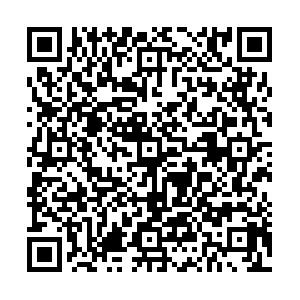Evaluation of the effect of health education interventions on nutrition-related guidelines in rural schools in Chengdu
-
摘要:
目的 探讨运用多种学龄儿童营养健康指南对小学学生知信行的干预效果,为指导学生合理膳食,改善不良饮食行为提供参考。 方法 选取成都市1所学校食堂供餐小学为干预校,另选条件相当的1所小学作为对照校。对干预校学生进行为期半年的营养宣教干预,对照校不提供干预措施。干预前后抽取三至五年级学生共589名进行问卷调查(终末调查558名,失访31名)。 结果 干预前,干预组和对照组大部分营养知识知晓率、总体知晓率达到80%以上的比例、饮食行为差异均无统计学意义(P值均>0.05)。干预后,干预组学生的营养知识知晓率以及总体知晓率达到80%以上的比例高于对照组(P值均 < 0.05);干预组早餐食物种类1种以下的比例(26.6%)低于对照组(49.4%),每周吃鸡蛋、喝牛奶的次数和吃蔬菜种类每天≥3种的比例均高于对照组(P值均 < 0.01);干预组学生剩饭率(15.8%)低于对照组(57.9%)(χ2=99.47,P < 0.01)。 结论 综合运用多种学龄儿童营养健康指南进行营养宣教,能够提高学生的营养知识知晓率,改善不良饮食行为。 -
关键词:
- 营养政策 /
- 干预性研究 /
- 健康知识, 态度, 实践 /
- 农村人口 /
- 学生
Abstract:Objective To explore the intervention effect of multiple nutritional health guidelines for school-aged children on the knowledge, attitudes and practices (KAP) of primary school students in Chengdu. Methods A primary school in Chengdu, which had a school canteen, was selected as the intervention school, and another similar primary school was selected as the control school. Students from the intervention school received nutritional education for six months, while the control school did not provide such intervention measures. A total of 589 students from grades 3 to 5 were selected to participate in the questionnaire survey(eligible 558, missing 31). Results Before the intervention, no significant difference was found in the rate of awareness regarding nutritional knowledge, including dietary attitudes and dietary behavior. After the intervention, the rate of awareness of nutritional knowledge and the overall awareness rate reached more than 80% in the intervention group, which was significantly higher than that observed in the control group(P < 0.05). The intervention group consumed less than one type of breakfast food(26.6%), which was less than the control group(49.4%). The frequency of weekly egg and milk consumption was higher in the experimental group than in the control group. The proportion of students who consumed three or more types of vegetables daily was higher in the intervention group than in the control group. The proportion of leftovers was lower in the intervention group (15.8%) than in the control group(57.9%). Conclusion The comprehensive nutritional education based on a variety of nutritional health guidelines for school-age children can enhance students' awareness of nutritional knowledge and healthier dietary behaviors. -
表 1 营养知识知晓率干预前后干预组与对照组学生比较
Table 1. Nutrition knowledge of students before and after intervention
知识 基线 干预后 对照组(n=278) 干预组(n=311) χ2值 P值 对照组(n=269) 干预组(n=289) χ2值 P值 《中国学龄儿童膳食指南》 100(36.0) 144(46.3) 6.46 0.01 99(36.8) 271(93.8) 202.40 < 0.01 如何预防缺铁性贫血 29(10.4) 38(12.2) 0.46 0.49 37(13.7) 242(83.7)** 272.90 < 0.01 含蛋白质丰富的食物 143(51.4) 225(72.3) 27.40 < 0.01 149(55.4) 268(92.7)** 102.90 < 0.01 营养充足的早餐 127(45.7) 152(48.9) 0.60 0.44 147(54.6)* 219(75.8)** 27.57 < 0.01 小学生每天的饮奶量 152(54.7) 218(70.1) 14.90 < 0.01 163(60.6) 265(91.7)** 75.41 < 0.01 营养价值高的零食 49(17.6) 69(22.2) 1.90 0.17 50(18.6) 233(80.6)** 214.50 < 0.01 小学生最健康的饮品 189(68.0) 218(70.1) 0.31 0.58 166(61.7) 278(96.2)** 101.90 < 0.01 看电子设备的时间 255(91.7) 274(88.1) 2.11 0.15 244(90.7) 277(95.8)** 5.95 < 0.05 中等强度身体活动时间 15(5.4) 11(3.5) 1.20 0.27 16(6.0)* 3(1.0)** 10.21 < 0.05 总体知晓率80%以上 4(1.5) 9(2.9) 2.42 0.12 3(1.1) 223(77.2)** 330.60 < 0.01 注:与基线时组内比较,*P < 0.05,**P < 0.01;()内数字为知晓率/%。 表 2 饮食行为分布情况干预前后干预组与对照组学生比较
Table 2. Dietary behavior of students before and after intervention
行为 选项 基线 干预后 对照组(n=278) 干预组(n=311) χ2/Z值 P值 对照组(n=269) 干预组(n=289) χ2/Z值 P值 最近1周吃早餐情况/d 没吃过 1(0.4) 3(1.0) 4.42 0.35 2(0.7) 0 3.79 0.44 1~2 8(2.9) 3(1.0) 4(1.5) 2(0.7) 3~4 3(1.1) 4(1.3) 1(0.4) 2(0.7) 5~6 3(1.1) 6(1.9) 7(2.6) 5(1.7) 每天吃 263(94.6) 295(94.8) 255(94.8) 280(96.9) 早餐食物种类# ≤1 116(41.7) 125(40.2) 2.81 0.42 133(49.4) 77(26.6) 35.64 < 0.01 2 83(29.9) 79(25.4) 75(27.9) 140(48.4) 3 58(20.9) 79(25.4) 52(19.3) 57(19.7) 4 21(7.6) 28(9.0) 9(3.4) 15(5.2) 最近1周吃零食情况*# <3次 165(59.3) 169(54.3) 3.44 0.48 112(41.6) 141(48.8) 11.33 0.02 4~6次 33(11.9) 47(15.1) 37(13.8) 28(9.7) 每天1次 53(19.1) 70(22.5) 72(26.8) 74(25.6) 每天2次 13(4.7) 10(3.2) 20(7.4) 32(11.1) 每天≥3次 14(5.0) 15(4.8) 28(10.4) 14(4.8) 最近1周喝饮料情况* < 3次 174(62.6) 200(64.3) 3.36 0.50 150(55.8) 191(66.1) 7.47 0.11 4~6次 35(12.6) 42(13.5) 21(7.8) 22(7.6) 每天1次 52(18.7) 46(14.8) 70(26.0) 56(19.4) 每天2次 10(3.6) 9(2.9) 15(5.6) 9(3.1) 每天≥3次 7(2.5) 14(4.5) 13(4.8) 11(3.8) 最近1周吃鸡蛋* 没吃过 26(9.4) 32(10.3) 2.39 0.49 38(14.1) 17(5.9) 18.92 < 0.01 1~3个 106(38.1) 101(32.5) 116(43.1) 107(37.0) 4~6个 48(17.3) 64(20.6) 36(13.4) 38(13.2) 每天≥1个 98(35.3) 114(36.7) 79(29.4) 127(43.9) 最近1周喝牛奶及奶制品 没喝过 19(6.8) 18(5.8) 0.47 0.92 31(11.5) 9(3.1) 21.34 < 0.01 1~3包 88(31.7) 96(30.9) 82(30.5) 99(34.3) 4~6包 53(19.1) 58(18.7) 50(18.6) 36(12.5) 每天≥1包 118(42.5) 139(44.7) 106(39.4) 145(50.2) 每天蔬菜种类# 基本不吃 5(1.8) 12(3.9) 6.93 0.07 5(1.9) 5(1.7) 35.27 < 0.01 1 54(19.4) 40(12.9) 44(16.4) 19(6.6) 2 98(35.3) 108(34.7) 107(39.8) 74(25.6) ≥3 121(43.5) 151(48.6) 113(42.0) 191(66.1) 注:*对照组干预前后比较P < 0.05,#干预组干预前后比较P < 0.05;()内数字为构成比/%。牛奶1包约为200 mL。 -
[1] 中华人民共和国中央人民政府. 国民营养计划(2017—2030年)[EB/OL]. [2017-06-30]. http://www.gov.cn/zhengce/content/2017-07/13/content_5210134.htm.Central People's Government of the people's Republic of China. National nutrition plan(2017-2030)[EB/OL]. [2017-06-30]. http://www.gov.cn/zhengce/content/2017-07/13/content_5210134.htm. [2] 中国营养学会. 中国学龄儿童膳食指南[M]. 北京: 人民卫生出版社, 2017.Chinese Nutrition Society. Dietary guidelines for school age children in China[M]. Beijing: People's Health Publishing House, 2017. [3] 李荔, 甘倩, 胡小琪. 《学生餐营养指南》标准解读WS/T 554—2017[J]. 中国卫生标准管理, 2018, 9(9): 2-5. doi: 10.3969/j.issn.1674-9316.2018.09.002LI L, GAN Q, HU X Q. Interpretation of Nutrition Guidelines for School Meals WS/T 554—2017[J]. China Health Stand Manage, 2018, 9(9): 2-5. doi: 10.3969/j.issn.1674-9316.2018.09.002 [4] 任时, 栾德春, 李欣, 等. 辽宁省盘锦市某试点学校营养知识与行为干预效果评价[J]. 中国健康教育, 2019, 35(9): 794-812. https://www.cnki.com.cn/Article/CJFDTOTAL-ZGJK201909008.htmREN S, LUAN D C, LI X, et al. Evaluation of nutrition knowledge and behavior intervention in a pilot school in Panjin City Liaoning Province[J]. Chin J Health Educ, 2019, 35(9): 794-812. https://www.cnki.com.cn/Article/CJFDTOTAL-ZGJK201909008.htm [5] JONES J, WOLFENDEN L, WYSE R, et al. A randomized controlled trial of an intervention to facilitate the implementation of healthy eating and physical activity policies and practices in childcare services[J]. BMJ Open, 2014, 4(4): e005312. doi: 10.1136/bmjopen-2014-005312 [6] GLASSON C, CHAPMAN K, GANDER K, et al. The efficacy of a brief, peer-led nutrition education intervention in increasing fruit and vegetable consumption: a wait-list, community-based randomized controlled trial[J]. Public Health Nutr, 2012, 15(7): 1318-1326. doi: 10.1017/S1368980012000043 [7] 任燕. 当前农村学生营养餐供餐模式研究[D]. 武汉: 华中师范大学, 2014.REN Y. Current studies of rural students' nutrition meal feeding modes[D]. Wuhan: Huazhong Normal University, 2014. [8] 中华人民共和国中央人民政府. 中国食物与营养发展纲要(2014—2020年)[EB/OL]. [2014-01-28]. http://www.gov.cn/zwgk/2014-02/10/content_2581766.htm.The Central People's Government of the People's Republic of China. Food and Nutrition Development Program in China(2014-2020)[EB/OL]. [2014-01-28]. http://www.gov.cn/zwgk/2014-02/10/content_2581766.htm. -

 点击查看大图
点击查看大图
计量
- 文章访问数: 545
- HTML全文浏览量: 362
- PDF下载量: 35
- 被引次数: 0





 下载:
下载: